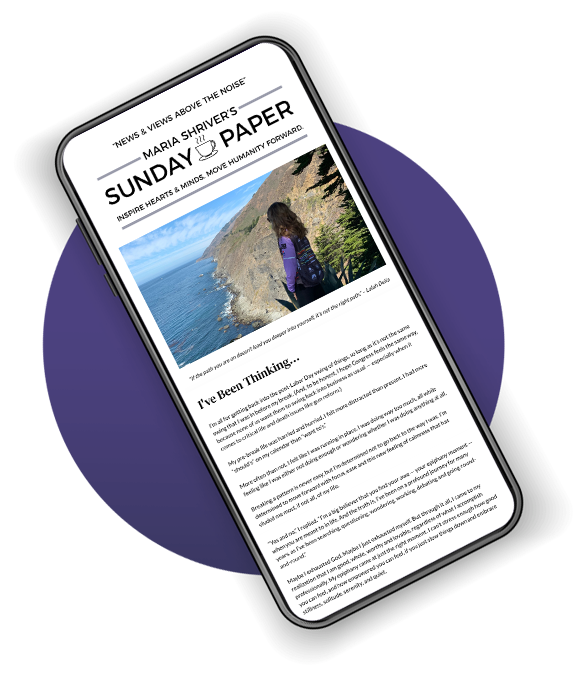How You Eat Influences the Way You Look, Feel, and Your Overall Health

The following is an excerpt from “The Happy Hormone Guide: A Plant-based Program to Balance Hormones, Increase Energy, & Reduce PMS Symptoms” by Shannon Leparski.
We often get stuck in a routine when it comes to eating because it’s convenient. We stick with what we know and like and end up eating the same foods week after week. Then we get bored or stressed out and throw in the towel. We order takeout more than we’d like or turn to processed meals because they’re easy until we feel like being healthy again. And the cycle continues.
Does that sound familiar? The problem with routine ways of eating is that your food can lack a variety of micronutrients necessary to fuel the functionality of your endocrine system and support hormone balance in your body. You can even develop food sensitivities from regularly eating the same things.
Food can act as healing medicine to naturally support and harmonize hormones. How you eat influences hormone function, how you look and feel and your overall health.
Your body moves through four phases every single month. Eating cyclically for your monthly cycle means switching up the types of foods you are consuming to optimize bodily functions at different times of the month. Each and every veggie, fruit, legume, nut, and seed offers unique vitamins and minerals that can help your body flow through each phase with less symptoms and more energy to work on healing and restoration.
The Happy Hormone Method, outlined in my book The Happy Hormone Guide, caters to women and matches up with what the body is asking for each week. Living this way can ensure you’re eating a variety of foods and prevent food boredom, while also being comfortingly predictable.
1: Menstrual Phase (lasts 3-7 days)
The menstrual phase can be considered as the “winter” season in your body. Consider it a time to rest, turn inward, and conserve energy. It is said to be a time when there is little distinction between intuition and logic, allowing you to gain deep access to your inner wisdom and gut feelings. The bleeding phase is naturally cleansing, releasing bacteria and excess iron from the body. It’s also a time of emotional release and shedding what no longer serves you.
Hormones are now at very low levels which means you have lower energy, your skin is dry and dull, and may appear more red. You may feel more run down than usual but that’s okay because we can’t be “on” at all times!
Menstrual Phase Foods: During this phase, your body needs rich, comforting and soothing foods to re-mineralize and replenish. Focus on miso soups, broths and stews with sea vegetables. Other foods to focus on include water chestnuts, hazelnuts, wild rice, fennel, chlorophyll, adzuki beans and coconut water.
2: Follicular Phase (lasts 7-10 days)
The follicular phase is the phase right after your period, when the body prepares to release an egg (also called ovulation). It can also be considered as the “spring” season in your body. Since your period just ended, you’re feeling optimistic, creative, and energized. You feel inclined to plan out your life and work for the next few weeks, leading up to your next period. During the follicular phase, your mood and brain function are optimized, which makes the planning process a breeze.
Follicular Phase Foods: As estrogen starts to rise, it may contribute to a lack of appetite. This is normal, which is why eating higher fat and colorful fresh foods to feed your follicles feels good at this time. Think extra avocado and vibrant vegetables like carrots, broccoli, zucchini, or green beans. Other foods to focus on include olives, asparagus, peas, cherries, plums, pomegranates, nut butter, vinegar-based sauces and dressings, broccoli sprouts and sprouted mung beans. Supplements to consider include zinc, iodine & selenium, vitamin B6 and probiotics.
3: Ovulatory Phase (lasts 3-4 days)
The ovulatory phase can also be considered as the “summer” season in your body! This is when the big event of ovulation happens. The ovulation phase influences you to connect and be more social, which works perfectly as this is the peak of your cycle. This is when you are a magnet for desire and attention. It is also when you are most fertile, which is something to keep in mind. Your skin is glowing, plump, and generally clear. The whites of your eyes look brighter, you probably have good hair days, and life feels effortless. Also, you’ll have all the energy for intense workouts in the gym or in bed.
Ovulation Phase Foods: Now is the time to focus on raw fruits and veggies that are cleansing, full of fiber, and anti-inflammatory. Eat lots of raw veggies like bell peppers, spinach, jicama, and tomatoes, or lightly steamed, fiber-rich vegetables like asparagus or Brussel sprouts. Other foods to focus on include cantaloupe, raspberries, guava, fennel, eggplant, okra, turmeric, pistachios and lentils.
4: Luteal Phase (lasts 12-14 days)
The luteal phase can be considered as the “fall” season in your body. A time to turn inward, gain clarity and get answers. During this time, you may feel the most detail-oriented, yearning to check things off your to-do list, finish projects, deep clean the house, and reorganize your entire life and home. This is all thanks to progesterone, the calming, anti-anxiety hormone that regulates your mood and promotes deep sleep.
Luteal Phase Foods: The foods for this phase are warming, detoxifying and grounding, like roasted root vegetables and complex carbohydrates that can help stabilize the estrogen dip and deter moodiness. Other foods to consider include those rich in B-vitamins, calcium, magnesium and fiber, like brown rice or sweet potatoes; fiber-rich foods like apples, pears and dates; and dandelion tea, fennel tea, or licorice tea to help the kidneys flush out excess water and relieve bloat.
You may be wondering, how am I going to remember what foods to eat and when? I thought the same exact things in the beginning, but I created the Happy Hormone Method to make it easy for you. For a cycle-syncing food chart, you can download a fun freebie on my website. And for the full Happy Hormone Method plan, please check out The Happy Hormone Guide.
Don’t expect to be perfect. Life, parties, and vacations happen, but you can always come right back. There are weeks when eating something quick matters more to me than eating something phase-friendly, but that doesn’t mean I throw it all out the window. I make choices at every single meal.
Remember, you won’t see major changes overnight but in 2-3 months, you should begin to notice significant improvements to your hormone balance and cycle. Give your body time to balance itself out, and don’t give up. So maybe all I can manage that day is a phase-friendly breakfast and snack, and that’s totally fine. But I’m always striving to eat foods that make my hormones happy because when my hormones are happy, I’m happy.
This excerpt was featured in the January 5th edition of The Sunday Paper. The Sunday Paper inspires hearts and minds to rise above the noise. To get The Sunday Paper delivered to your inbox each Sunday morning for free, click here to subscribe.


